In the field of woodworking, on the other side of those who promote the manual manufacture of objects, there are those who are hopelessly won over by the technical side, by machines using the latest technology. This is also the case in wood finishing. In contrast to those who apply oil or wax with a brush, a rag or a brush, they prefer modern finishing materials applied with the most advanced systems. In the case of spraying, the complexity of the guns is determined by the complexity of the technologies, how "manual" or automated they are. There are simple guns for simple technologies, but also reciprocators or anthropomorphic robots when the technologies are more machine-dependent than human-dependent. It is about these spray systems that I propose to talk about, about their choice according to their performance, but also according to the needs of the factory.
Spray finishing lines
Spraying can be done manually or with automatic systems. In the case of manual application, the main emphasis is not on productivity but on the human ability to apply the lacquer to all parts of the object as well as possible. When automated systems are used the main requirements are productivity and reproducibility of the final result.
In automatic systems the parts to be finished pass at a calculated and constant speed past one or more guns. They are called finishing lines and comprise several operations that are done automatically, with the help of machines. It is basically a system that transports the workpieces (conveyor belt, chain), moving them automatically from one operation to another (sanding, roughing, lacquering, drying).
The realization of these lines depends on the shape of the objects to be finished. In the case of smaller objects or removable furniture, conveyor belts are used on which the components are placed and varnishing is done with guns mounted in an enclosure through which the belt passes. We have already talked about this type of finishing linesso I won't insist.
However, there are also larger objects that cannot be varnished on such lines (mounted chairs, windows), in which case chains are used to hang the objects. Varnishing is done as soon as the object reaches the point where the application system is located.
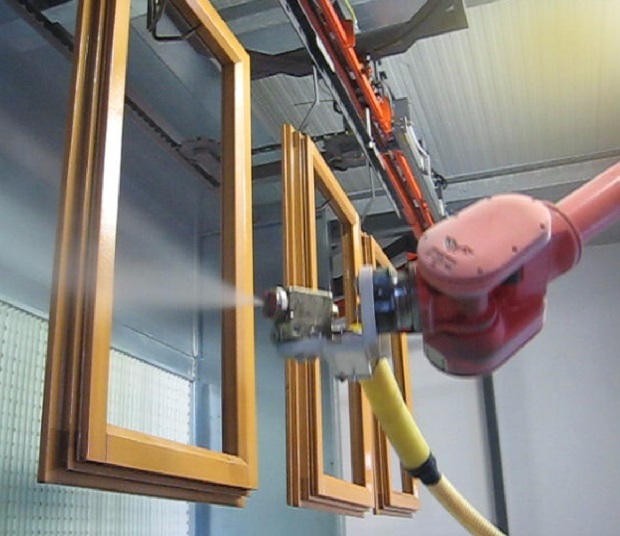
Types of guns used on chain finishing lines
Basically, application systems fall into 3 categories:
- manual application - application is done by a person wielding a simple spray gun or pump;
- automatic application by vertical translation movement - the application is done automatically, the gun moving in a vertical direction (up and down) as the parts to be coated pass in front of the gun. Basically it is a 2-axis application system: horizontal (conveyor) and vertical (gun). Such guns are called reciprocating guns;
- automatic application by 6-axis movement - is done by a robot that copies the movements of the human hand, applying the material from any angle. The robot can be programmed to repeatedly apply the material to any shape. These robots are called anthropomorphic.
For all these systems the guns can be airless, airmix, electrostatic or for application of powder paint.
Manual application
In such applications, the sprayer is positioned at a fixed point and the objects pass by him. Application is done with guns mounted on pumps. This is how window frames or chairs are finished. There are also lines on which furniture is finished, but these are moved on wheeled conveyor belts.
Manual application makes the system cheaper than an automated one. The disadvantage is reduced productivity and the possibility of not achieving the same result for all objects being finished.
If the objects to be finished are more difficult, requiring more attention, this system is very suitable. The sprayer can see the surface of the object at all times and can intervene immediately if defects appear.

Reciprocal
The system is used for less complicated objects. It is basically a 2-axis application - vertical and horizontal, with the gun only moving in one direction. This rather restricts the range of products that can be finished in this way.
It is possible to combine several such systems in such a way that the object is covered from several sides. If it is desired to apply a panel face-to-back, one reciprocator will be mounted in one direction and the other at 180° to the first. In this way the panel moving by means of the chain will pass in front of the 2 reciprocators and will be covered on both sides.
The system has a much higher productivity compared to manual application and the result is the same all the time, independent of human intervention. The disadvantage is, as already mentioned, that it cannot be used for coating more complicated objects. However, by combining several such guns, the product range is considerably diversified.
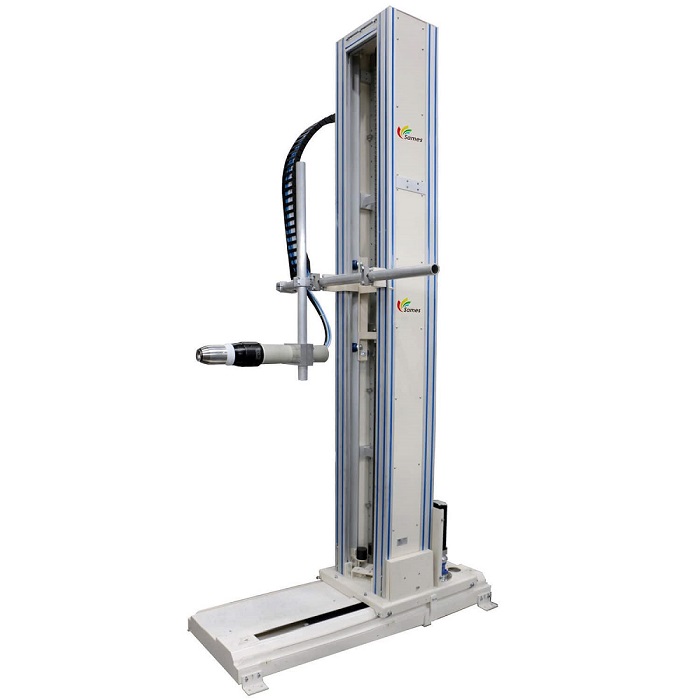
Anthropomorphic robots
We are already talking about state-of-the-art machines with remarkable performance. This robot "at work" looks like something out of a science fiction movie. The gun is mounted at the end of a robotic arm capable of reproducing the movement of the human hand and arm. The movements of such a robot are 6-axis.
The movements needed to perfectly cover an object, however complicated, are "translated" into a computer program, and the robot can reproduce them identically whenever necessary. We are dealing with a system with very good productivity and reproducibility. The downside to such machines may only be the price.
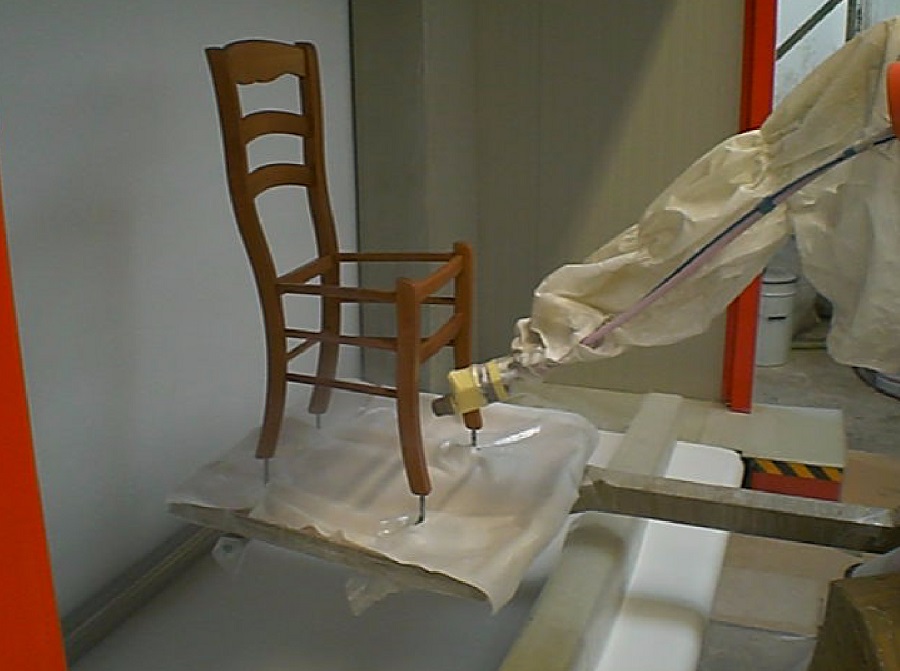
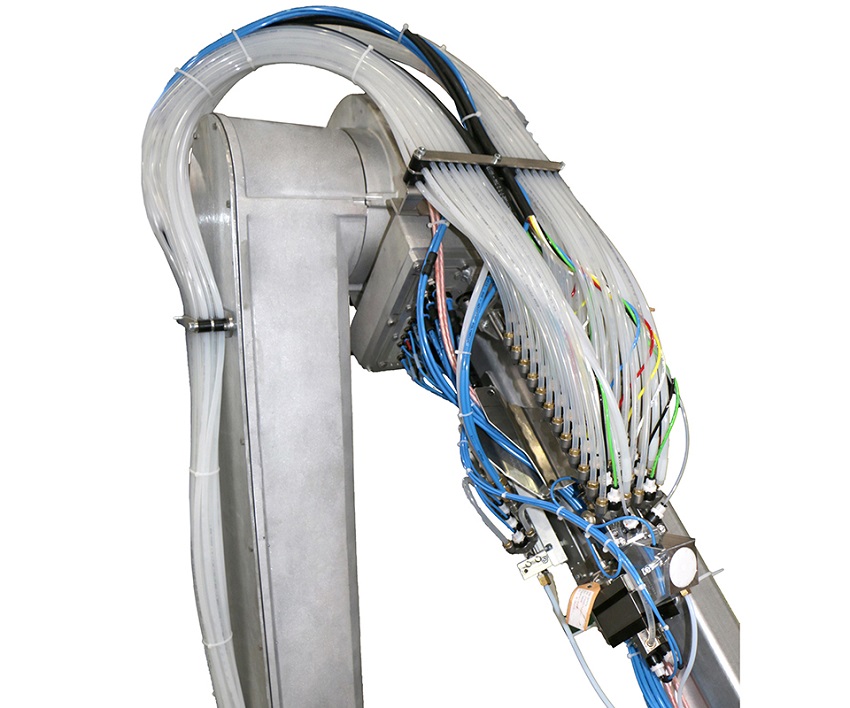
Designing an automated solution
Before choosing one or other of the options, it is a good idea to analyze the parts to be covered. The analysis may result in a more affordable or better performing option. An example of such an analysis can be found at Falk Consulting distributor of the French manufacturer of spraying equipment Sames Kremlin in Romania
Falk and Sames Kremlin suggest a series of questions to answer before you start designing your finishing line. It is important to know the dimensions of the objects to be finished, whether they will be fixed or movable, the pitch between them, etc. This is the starting point for the design and sizing of the finishing line.
Purchasing a finishing line
You don't buy a finishing line by going to a trade fair or a show. There you see the possibilities, compare, gather information, discuss the options. The choice of line is always based on the data available in the factory.
First of all the need for it must be determined. The investment in such a line must be worthwhile and, above all, it must be recouped. Do not invest in a high productivity finishing line if that is not what you are looking for in the first place. Likewise, if you are one of those who make furniture or one-off items or small series, certainly not high productivity finishing lines is what you need.
For series production, especially large series, a finishing line is a very good choice. Depending on the desired productivity, the type of product and last but not least your budget, you can choose a finishing line where the application can be manual or automatic. How automatic is up to you. I can only wish you the best choice.

























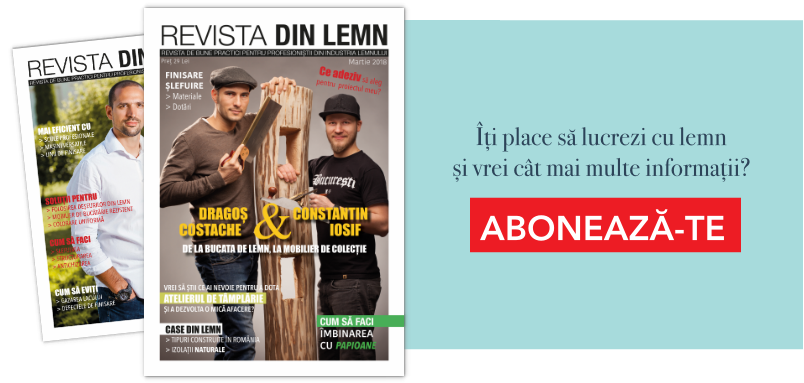

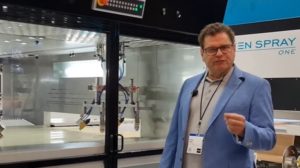




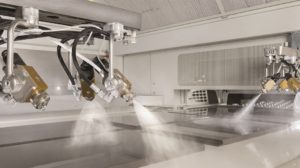





Add comment